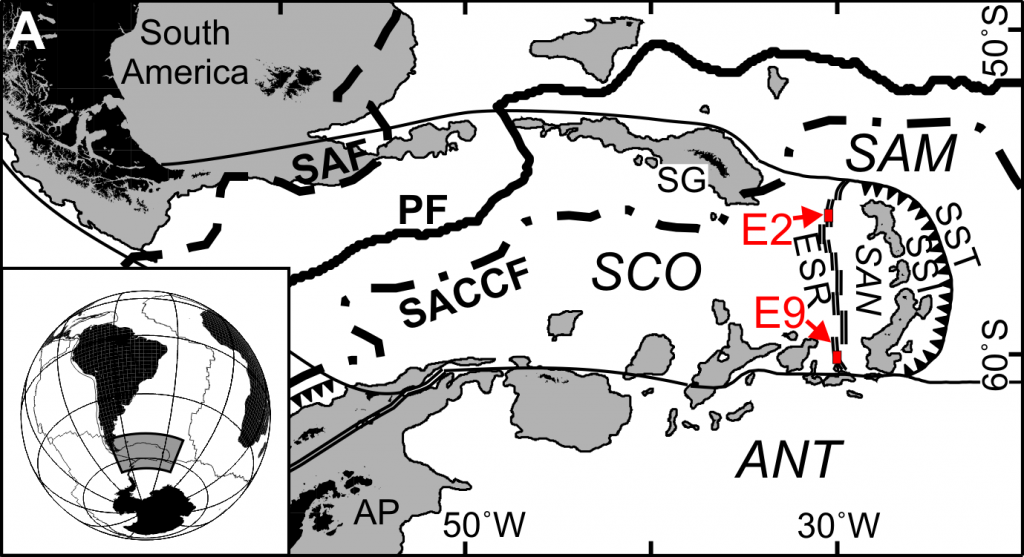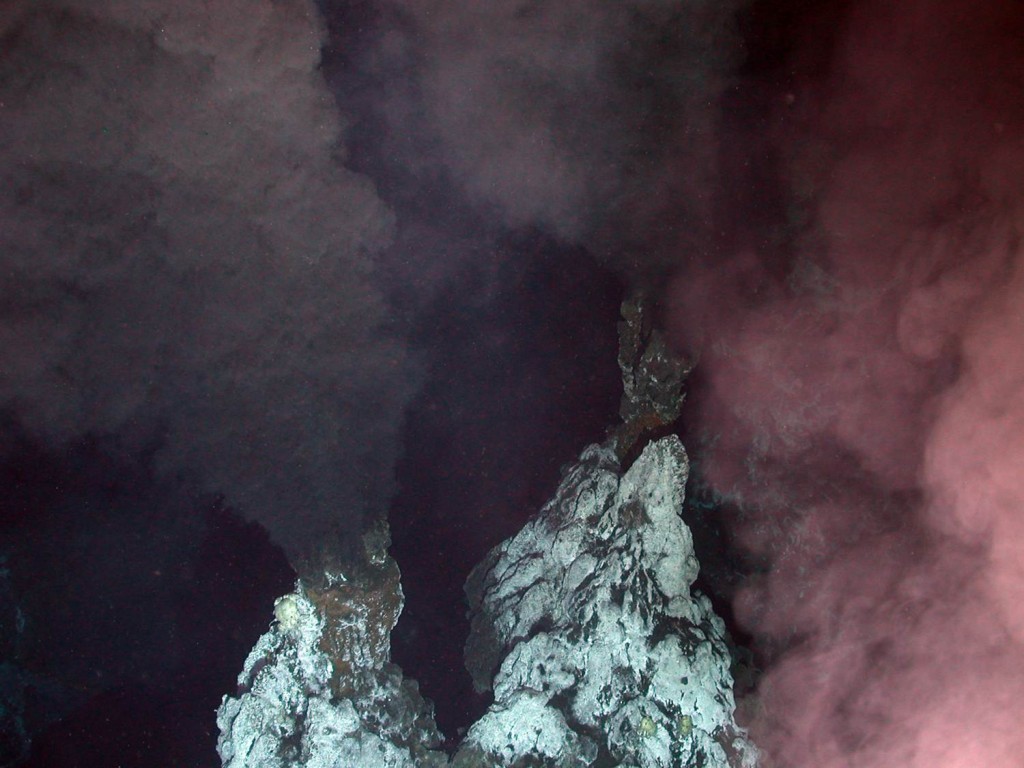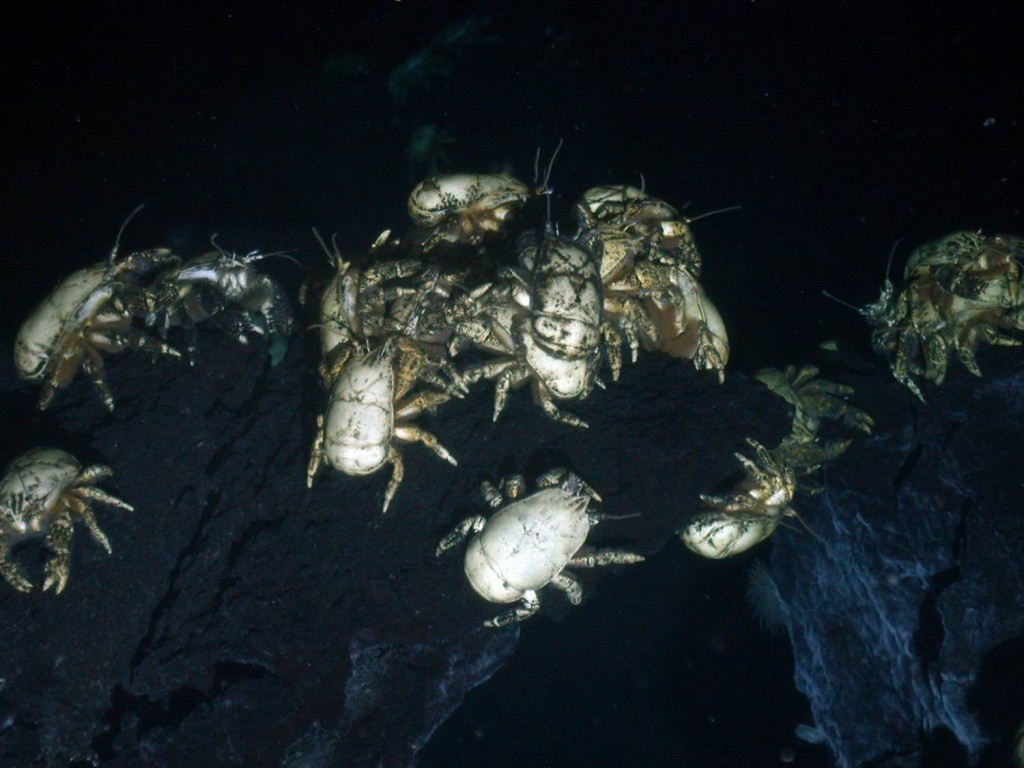So we have closed off all the high priority work at E2. We have overstayed by at least three days and unfortunately the ice has only broken up a little. Arrrgh so frustrating we are now watching time at other sites slip away. Still that is the nature of this kind of work. Remember the ever evolving alternative plans? We crack out the box marked E5. The East Scotia Ridge on which we are mostly working is segmented with a series of offsets along its length. The map below shows the sections. E1 is slowly disappearing under the South American crustal plate, but the rest of the ridge continues to spread eastward and westward. Including E1 there are 10 segments to the ridge and way back on the first cruise in this project in 2009/10 (a geology and chemistry cruise only) early evidence of hydrothermal activity was detected by water chemistry at E2, E5 and E9. Short of high priority options we steamed 12 hours south to E5. It allowed an assessment of the ice and a look for the plume signals in the water.

Sorry but I could only find an academic map of the East Scotia Ridge (ESR) showing what I wanted. It shows all 10 segments and the two that we had planned to work on. The earths crust is separating at the ridge. Some going west and forming the Scotia crustal plate (SCO) and some going east and riding over the top of the top of the South American plate (SAM). The triangles represent the subduction zone around the South Sandwich Trench. The South Sandwich Islands (SSI) and the shallow water (in grey) around them are formed by a series of volcanos, some of which are still active, the lava coming from the crust that melts as it is forced under at the trench. (By Rogers et al. 2012)
We found some! Plumes not Ice. Not big signals, but signals none the less. There is active venting down there. Now we just have to visit. And therein lies a problem. Remember the crushing pressures we experience at that depth? At 3000m the pressure will be about 300x that at the surface and so the volume of air is 1/300th what it was. That can crush scaffold poles if their ends were sealed up. Well the location of venting on the E5 site is deeper than at any of our planned sites. Isis has recently been undergoing repairs including new buoyancy cells (the red and yellow bits) supposedly rated to 6500m. They are a special glass bead foam that should be capable of surviving the pressures we want to work at. At £0.5 million a pop you would hope so. But as we are learning on this cruise, hope and reality can often be quite separate things. Pressure trials before our cruise saw one buoyancy cell implode. They rushed through a spare for this cruise but it is only rated to 3000m. Sites found at E5 indicating venting are at 3000m. The ROV guys have done us proud so far and it is always a gamble putting anything over the side of a ship. In this case however, the odds are not high enough in our favour. So close but so far. Chalk that site up to the next grant proposal or as a target to pass on to the cruises of other nations who find themselves in our position and looking for alternatives.
So where does that leave us? We are headed back to E2. We know we have plumes there from vents we have not found yet. True we have spent 2 days looking both chemically via the CTD and physically with the ROV in the water. Still we have ONLY spent two days. That is a short search time. The problem is that vents are small sites. Often less that 100m in length from end to end for the entire vent field. Individual chimneys can have a sphere of influence of less than 10m. We could easily have missed them in our searches. That is assuming we were looking in the right place before. Currents aren’t as easily predicted in the deep sea as in our coastal seas so it is hard to say where the plume came from. We will try again. Another vent field would make it all good. Cruises are deemed a success on finding a vent alone and we have 500 samples in the bag from the sites we visited already.
So it was a 12 hour overnight steam and back to working and waiting … waiting for the vents to show or the ice to go.
In the mean time I have plenty to do. I have time to catch up with work like data entry and vial labeling or other things that got put on hold ….sleep perhaps. It was a 91 hour working week last week according to my time sheet. A lighter workload for a day…say perhaps only 9-10hours is good for morale. Perhaps I can defend my scrabble title tonight. I won two of last night’s three games. For me that is no mean feat. Those that know me (or tut at the spelling in the blog …which I correct when I spot it) will guess I’m the wild card entry. The competition is stiff and the game very competitive!
But for now….good night I’m off for second breakfast.
Bilbo Baggins


